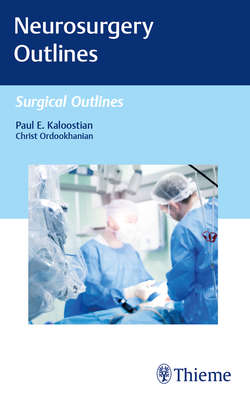Читать книгу Neurosurgery Outlines - Paul E. Kaloostian - Страница 13
На сайте Литреса книга снята с продажи.
Pitfalls
Оглавление• Loss of neck mobility by ~30%
• Intraoperative cerebrospinal fluid (CSF) leak
Fig. 1.2 (a, b) Cord decompression, corpectomy (C5), and fusion (C4–C6) were performed. The fusion healed within one year. (Source: Diagnostic Features. In: Vialle L, ed. AOSpine Masters Series, Volume 5: Cervical Spine Trauma. 1st ed. Thieme; 2015).
Fig. 1.3 (a–d) A patient suffered cervical trauma resulting in C3/C4 dislocation. Fusion (C3–C4) was performed and lateral mass screw placement was verified using X-ray and CT scan. (Source: Cervical case studies. In: Perez-Cruet M, Fessler R, Wang M, eds. An Anatomic Approach to Minimally Invasive Spine Surgery. 2nd ed. Thieme; 2018).
• Blood clot (deep vein thrombosis, or more severe pulmonary embolism)
• Damage to spinal nerves and/or cord
• Postoperative weakness or numbness or continued pain
• Postoperative wound infection
• Continued symptoms postsurgically/unresolved symptoms with no improvement to quality of life
Fig. 1.4 A man suffered cervical trauma after a bicycle accident, resulting in traumatic disk herniation. Radiology revealed associated cord contusion and C3–C4 instability. Fusion (C3–C4) was performed and after therapy, his paresis reduced. (Source: Brembilla C, Lanterna L, Gritti P, et al. The use of a stand-alone interbody fusion cage in subaxial cervical spine trauma: a preliminary report. J Neurol Surg A Cent Eur Neurosurg 2015;76(01):13–19).
